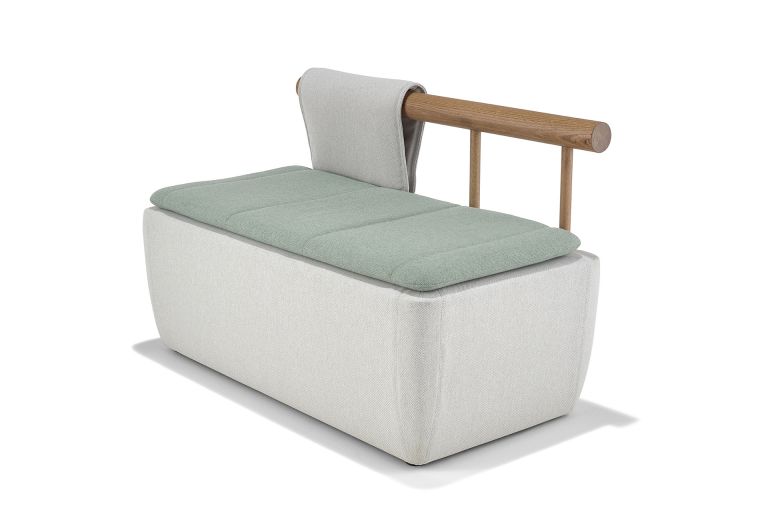An office is no longer simply a space to work. It is a drawcard, a content platform and, in the case of Energy and Water Ombudsman Victoria’s new Melbourne headquarters, a sanctuary. And it’s no wonder: the not-for-profit organisation functions in part as an impartial dispute resolution service. High numbers of complaints from disgruntled customers creates an emotionally-taxing work environment. The challenge for WMK Architecture was to use design as an antidote, which it sought to do by making the mental wellbeing of Energy and Water Ombudsman Victoria’s (EWOV) employees its key consideration.
But WMK’s design for EWOV’s entire floor of Melbourne Central Tower does not look like the typically minimalistic, muted interior style that’s become emblematic of the contemporary ‘wellbeing’ aesthetic. Aside from a generous peppering of greenery, the Melbourne arm of WMK’s practice has rejected those expected visual cues, instead drawing upon a concept altogether more unexpected: ‘a tranquil river walk in the Australian landscape.’
To realise this vision, WMK harnessed the full colour spectrum of Australia’s natural world to evoke feelings of calm and warmth. A neutral canvas of mineral greys and timber offsets tones of sea-foam green and red earth in a confident display of native influences. A redesign of the floor plan allows for more haphazard interaction between staff, where a mottled blue pathway leads teams through various zones; a flowing tributary encouraging seamless collaboration and communication.
At the heart of the space, a main hub is delineated by timber floorboards and is split into two sections: one elevated onto a modest platform. Within this central zone, large ocean-blue pods in spherical frames offer up playful, safe havens for small groups. A generous conference room with fully retractable doors offers both literal and metaphorical openness. Opposite, smaller meeting rooms suggest a more intimate and flexible workspace dynamic.
It’s here in this hub that WMK’s use of a rich shade of burnt clay is fully realised, subtly injected in the framework of glass walls as well as in the gauzy curtains that gently shield those behind them. At the perimeters of the space, overlooking a bustling cityscape below, staff are encouraged to pause on soft lounge chairs in sunset tones of peach and grey.
WMK’s strategy to counteract a highly-charged atmosphere relied on equal parts function and beauty. It’s the tactics its designers employed that highlights how far workplace design has evolved in recent years, showcasing a leap into a realm that takes conceptual themes and abstract references to create spaces that are delightful – even literal – expressions of an organisation’s purpose. At EWOV, vibrant material selection and deft spatial planning has resulted in a clever, fluid office that honours the role at the company’s heart. More than this, EWOV’s new home captures the thing that is central to all strong human-driven design outcomes: a clear vision that puts people at its core.
This article originally appeared on indesignlive.com.
Featured Products




